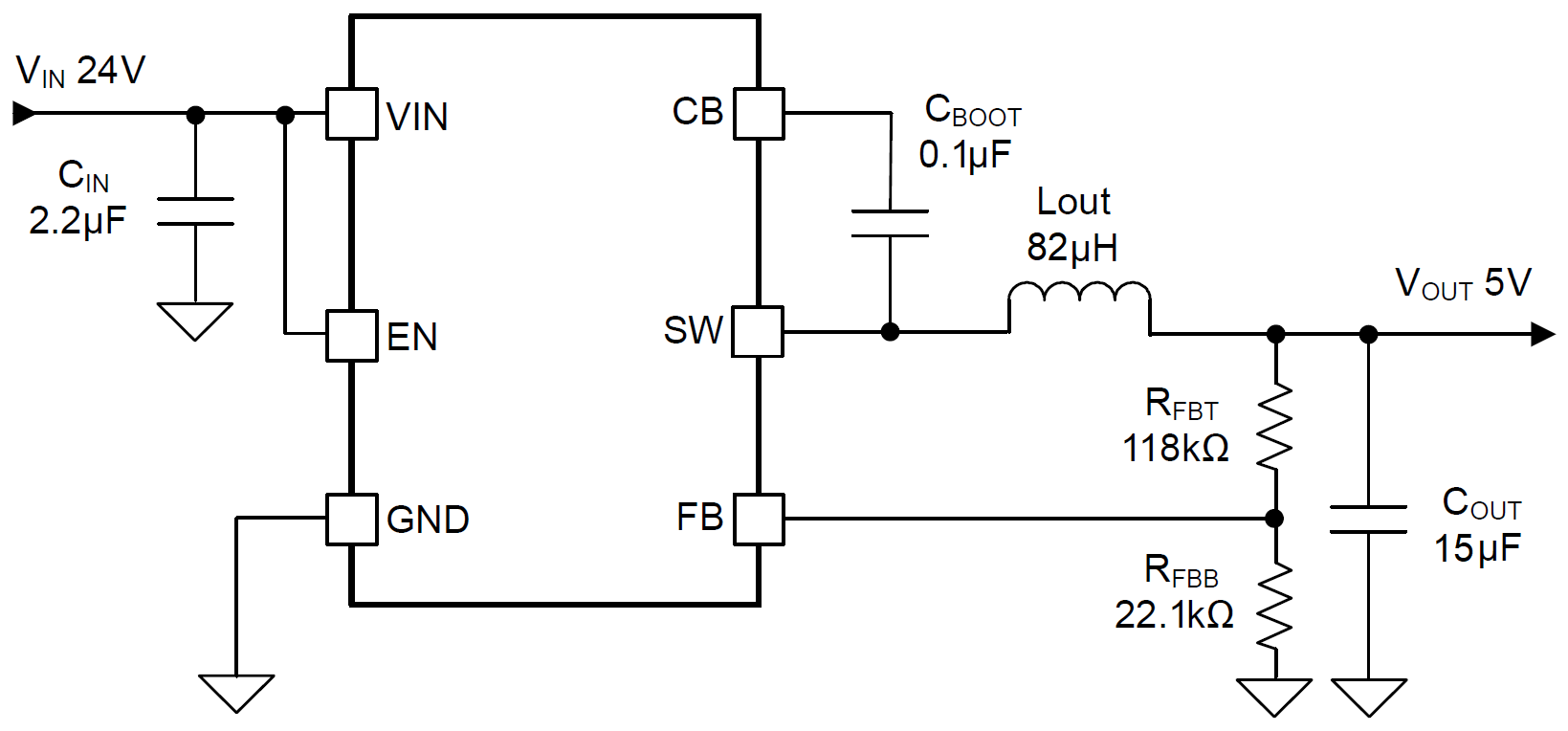SLUSFS7 September 2024 LMR51603-Q1
PRODUCTION DATA
- 1
- 1 Features
- 2 Applications
- 3 Description
- 4 Device Comparison Table
- 5 Pin Configuration and Functions
- 6 Specifications
- 7 Detailed Description
-
8 Application and Implementation
- 8.1 Application Information
- 8.2
Typical Application
- 8.2.1 Design Requirements
- 8.2.2
Detailed Design Procedure
- 8.2.2.1 Custom Design With WEBENCH® Tools
- 8.2.2.2 Output Voltage Setpoint
- 8.2.2.3 Switching Frequency
- 8.2.2.4 Inductor Selection
- 8.2.2.5 Output Capacitor Selection
- 8.2.2.6 Input Capacitor Selection
- 8.2.2.7 Bootstrap Capacitor
- 8.2.2.8 Undervoltage Lockout Setpoint
- 8.2.2.9 Replacing Non Sync Buck Converter
- 8.2.3 Application Curves
- 8.3 Power Supply Recommendations
- 8.4 Layout
- 9 Device and Documentation Support
- 10Revision History
- 11Mechanical, Packaging, and Orderable Information
Package Options
Mechanical Data (Package|Pins)
- DBV|6
Thermal pad, mechanical data (Package|Pins)
Orderable Information
8.2 Typical Application
The LMR51603-Q1 only requires a few external components to convert from a wide voltage range supply to a fixed output voltage. The following image shows a basic schematic.
 Figure 8-1 Application Circuit
Figure 8-1 Application CircuitThe external components must fulfill the needs of the application and the stability criteria of the control loop of the device. The following table can be used to simplify the output filter component selection.
Table 8-1 L and COUT Typical Values
| fSW (kHz) | VOUT (V) | IOUT (mA) | L (µH) | COUT(1) | RFBT (kΩ) | RFBB (kΩ) |
|---|---|---|---|---|---|---|
| 400 | 3.3 | 300 | 56 | 22µF / 10V | 69.8 | 22.1 |
| 5 | 300 | 82 | 15µF / 16V | 118 | 22.1 | |
| 12 | 300 | 150 | 2 × 4.7µF / 35V | 309 | 22.1 |
(1) A ceramic capacitor is used in this table.